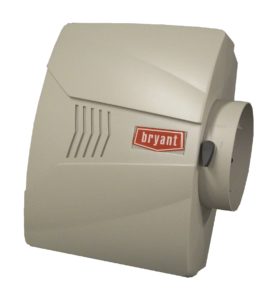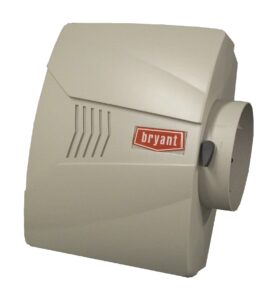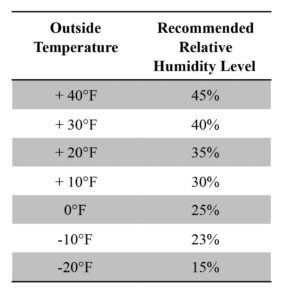All About Humidifiers


A humidifier is a device that emits water vapor to increase the airborne moisture in an area. There are two primary types of humidifiers: portable and whole-house units.
Portable Humidifiers: Many are familiar with these small, self-contained units which are readily relocatable. A typical design plugs directly into a wall and pulls water from a refillable tank. While mostly effective, convenient, and available for purchase at any major home supply store, portable humidifiers are limited in square foot coverage and must be cleaned and filled regularly.
Whole-House Humidifiers: Also known as central, in-duct, or online humidifiers, a whole-house humidifier is built into your home’s heating and cooling system and humidifies the entire home. It is controlled by either a thermostat or a humidistat depending on the HVAC system’s capabilities. These controls allow the unit to adjust according to the humidity condition of your home. When humidity levels drop below the set level, the humidifier will be signaled to turn on during the next heating cycle. Once humidity levels are reached, the unit automatically shuts down. Cleaning normally is needed only once a year with your annual heating system maintenance performed a licensed professional. At this time the water panel is replaced and the unit is checked for proper operation.
Why should I have a humidifier?

Maintaining a proper level of humidity in your home has a large number of benefits. Particularly in the winter time, cold and dry air can irritate your skin and respiratory system. A humidifier provides the moisture necessary to help relieve dry, chapped skin and assists in soothing cold and flu-like symptoms such as chest congestion, sinusitis, and can even help prevent nosebleeds and snoring.
Better indoor air quality and general comfort can also be achieved with good quality humidifier. Adding airborne moisture reduces the opportunity for dust and other irritants to circulate in the air you breathe. In addition, humidity levels between 40-60% help you feel warmer at lower set temperatures, so you’ll feel more comfortable and save on utility costs.
A humidifier is also beneficial in caring for your home by preventing the shrinking and cracking of wood floors, plaster, paint, furniture, and damage to delicate musical instruments due to dry air. It may also lengthen the lifespan of electronics by decreasing the presence of static electricity.

Humidity Level Recommendations
While there is a general debate regarding a specific recommended relative humidity level, most sources recommend humidity between 35-55% depending on your local climate and personal comfort level. As outside temperatures fluctuate, the humidity level inside your home also must adjust accordingly. Below is a chart of recommended humidity levels based on outside temperatures:

Proper humidity control is important for minimizing the growth of bacterial, molds, viruses, and dust mites. While dry air can be problematic, too much moisture can also lead to adverse air quality conditions. Best option: keep you home safe by keeping an eye on the humidity level, adjust the humidity setting as needed (especially if the unit does not automatically do it for you), and clean your portable humidifier every three days during frequent use, or if you have a whole-house humidifier, schedule annually to have an HVAC professional service performed.
Contact the Home Comfort Team at Design Air today to schedule for a free residential estimate on the installation of a whole-house humidifier in your home or to schedule for maintenance on an already existing unit. Call us today at (406) 251-7997 or request service online.